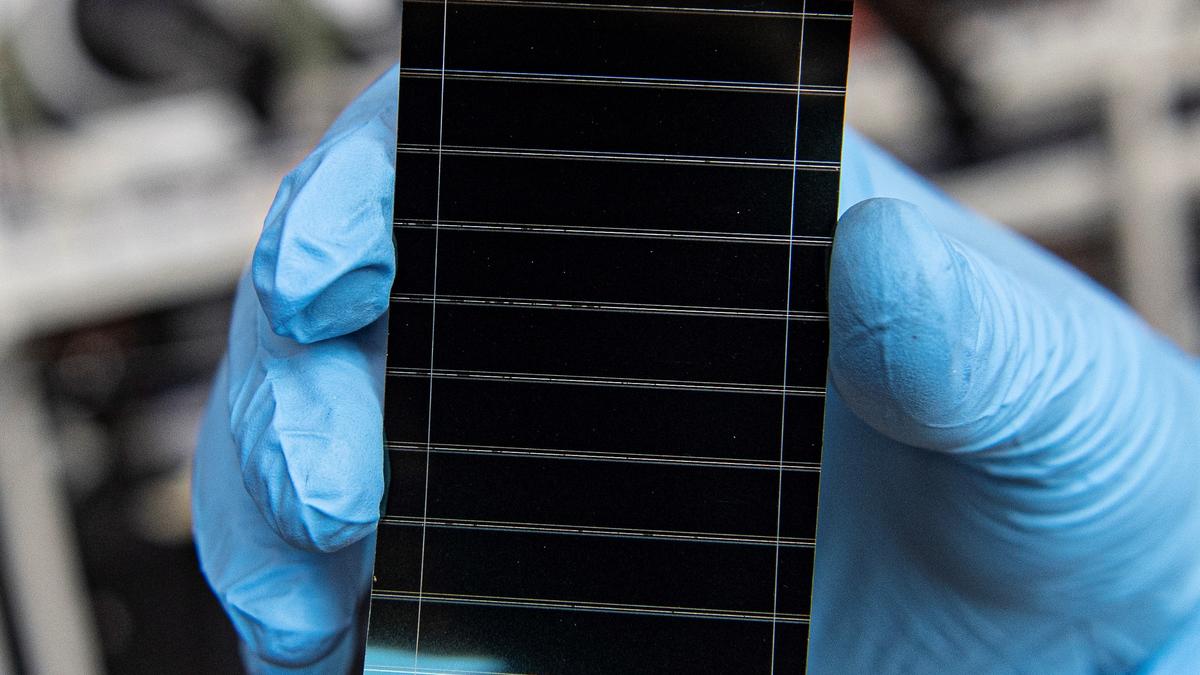
Scientists find green way to recycle toxic perovskite solar cells Premium
The Hindu
Scientists have developed a water-based recycling solution for perovskite solar panels, aiming to reduce environmental impact.
Using solar energy may be better for the environment than burning through fossil fuels, but the process still isn’t exactly perfect. Making silicon-based solar panels is energetically expensive and we still don’t know what to do with the silicon once the panels are done being used.
There is a cheaper way to make solar panels, also called photovoltaics (PVs), using crystal structures called perovskites. However, perovskite crystals contain toxic elements like lead, which needs to be processed carefully once these solar panels reach the end of their lifespan. And so far, researchers have had to use toxic organic solvents like dimethylformamide to recycle such solar panels.
Now, in a paper published in Nature, scientists have described another, potentially greener way of dealing with the problem. Using a water-based recycling solution, they have reported a way to degrade and recycle used perovskite. They were also able to get back high-quality perovskite crystals, which can potentially be used again for making new solar cells.
“It’s kind of a complex chemistry to make the water solution usable and very stable for perovskite recycling, to fully remove the [the use of] organic solvents,” Xun Xiao, a postdoctoral researcher at Linköping University in Sweden and lead author of the paper, said.
Perovskite solar cells are made up of multiple layers. The perovskite layer is sandwiched between materials that can conduct and transport charges, in this case metal electrodes and glass sheets.
“People have been very excited about [perovskite PVs] for a decade or more now because very quickly they have been able to achieve very high power conversion efficiencies,” Rhys Charles, a researcher in the chemical engineering department at Swansea University in the UK explained. “So you could deliver an extremely cheap solar energy technology, but there are some things that have been holding the field back.”
Stability is one of them: perovskite solar cells have a shorter lifespan.

 Run 3 Space | Play Space Running Game
Run 3 Space | Play Space Running Game Traffic Jam 3D | Online Racing Game
Traffic Jam 3D | Online Racing Game Duck Hunt | Play Old Classic Game
Duck Hunt | Play Old Classic Game











